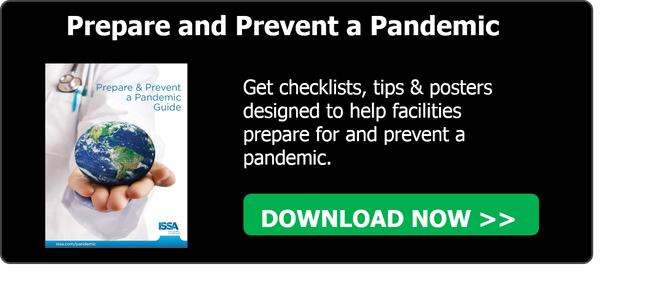Stop the Spread of Germs
It is important to understand some terminology when it comes to cleaning. Understanding this language will lead you to be able to take a wider approach to maintaining your environment to be germ free and to help stop the spread of germs.
What is cleaning versus sanitizing and disinfecting?
The differences are significant as each level plays a role in the overall cleaning process.
Cleaning
Cleaning is just that, cleaning. It is the act of removing dirt, germs, and residue. It does not necessarily kill germs or bacteria. Cleaning large amounts of soil, dirt, etc. is critical before sanitizing or disinfecting can occur. If sanitizing or disinfecting is the goal, large quantities of dirt or soil will impede the ability of chemicals to do their work effectively.
Sanitizing
Sanitizing is the act of lowering the number of germs on surfaces. Sanitizing reduces the germ count to a level considered safe by public health standards to decrease the risk of spreading infections. (The removal of 99.99% microorganisms).
For a surface to be sanitized it must be cleaned sufficiently, otherwise it is impossible to obtain close contact between the sanitizer and the surface to be sanitized. Also some chemical sanitizers (e.g. chlorine and iodine) react with organic matter and so will be less effective when the surface is not properly cleaned. Sanitizers are designed to clean and sanitize at the same time. However, excessive soil and dirt should always be cleaned and removed first.
Disinfecting
Disinfecting kills germs on surfaces using chemicals. The act of disinfecting does not necessarily clean dirty surfaces or remove germs. The act of disinfecting usually involves a certain amount of dwell time for the chemical solution depending on the manufacturers recommendations. Even disinfecting doesn’t necessarily kill all organisms.
So having an overall cleaning strategy that has an understanding of the true elements of cleaning are important if you are hoping to prevent the spread of germs.
Does Everyday Cleaning Plan Include All Categories of Cleaning?
Does your cleaning plan include all categories of cleaning or are you just cleaning without any awareness of the need to properly sanitize or disinfect? Most professionals will recommend that at the least you should be sanitizing surfaces that are frequently touched in your home or office.
The question becomes, do your people understand what this means? Go into your cleaning closet or janitorial room. Do you see cleaning cloths hanging to dry? If so, you know that your cleaners are very likely just cleaning with a damp cloth. This means they are removing visible soils but not likely taking the next steps in combating the spread of germs by properly sanitizing or disinfecting.
Stop the Spread of Germs
You can help stop the spread of germs by having cleaning supplies on hand for your workstation or keys areas of your home. The quickest and easiest are pre-moistened disinfecting or sanitizing wipes, which you can use to clean the surfaces you touch the most before you start for the day work.
Ensuring a work environment that is clean and sanitary doesn’t have to be difficult. Preventing the spread of germs is really everyone’s responsibility and that starts with good hand hygiene. Be aware of how germs spread and have a good cleaning plan. This helps set the stage for a well-rounded plan to keep germs at bay. Also look for clues (or ask them) to see if your cleaning professional understands the correct techniques to help you stop the spread of germs in your work environment.


